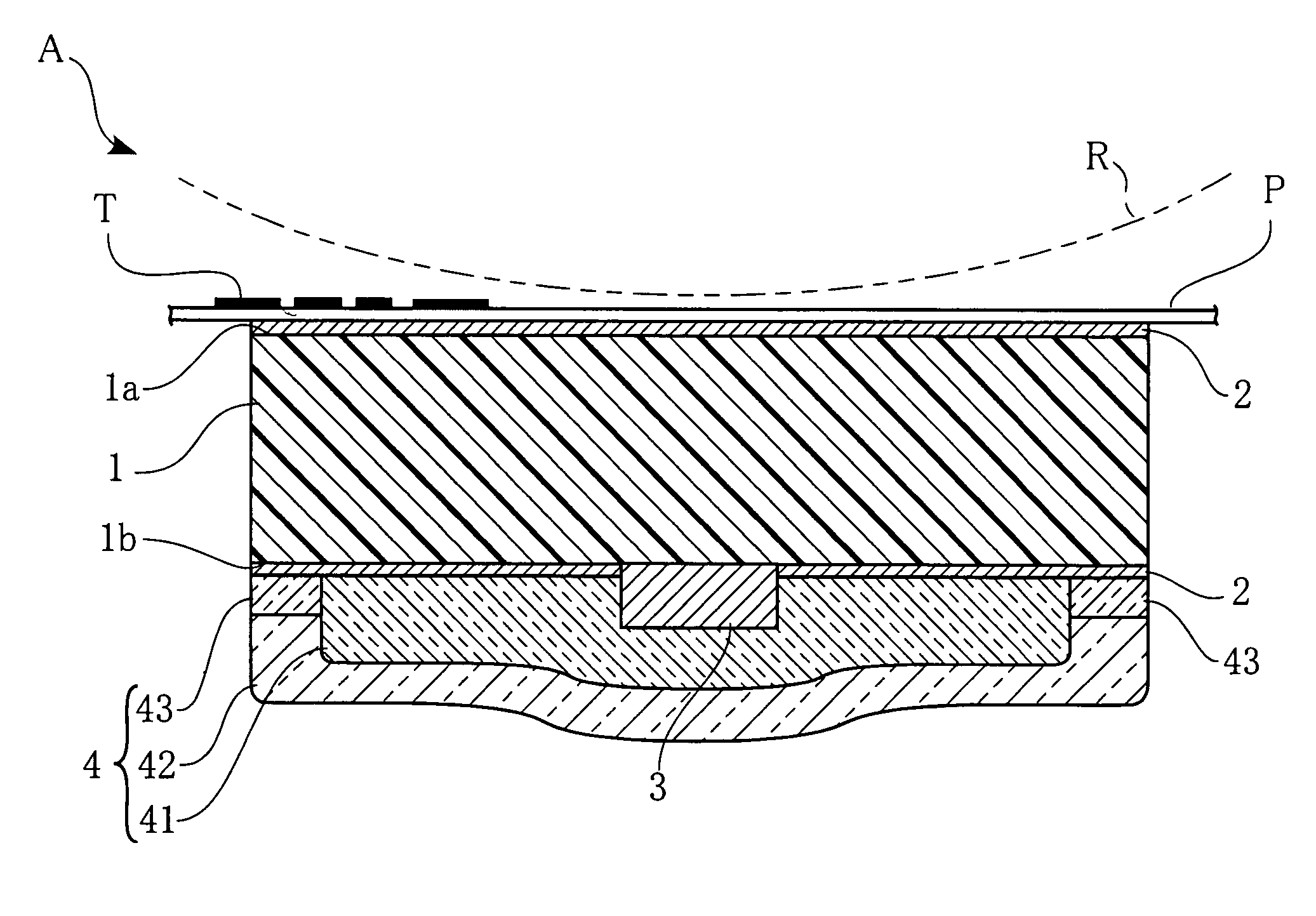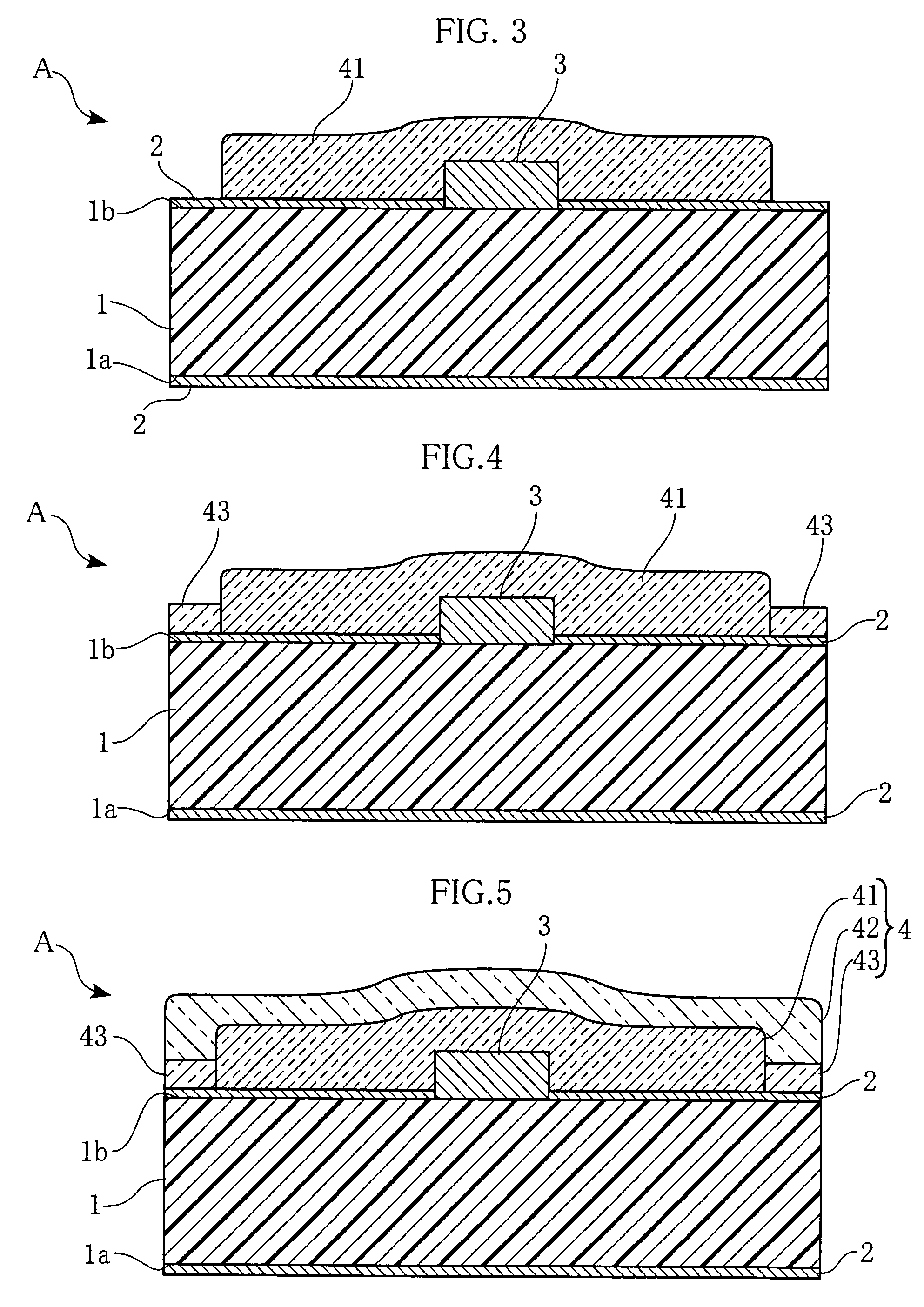Heating unit and method of making the same
a technology of heat exchanger and heat exchanger, which is applied in the direction of electrographic process, instrument, and semiconductor/solid-state device details, etc., can solve the problems of surge issue, insufficient insulation performance, and critical surge issues, and achieve the effect of suppressing reaction
- Summary
- Abstract
- Description
- Claims
- Application Information
AI Technical Summary
Benefits of technology
Problems solved by technology
Method used
Image
Examples
Embodiment Construction
[0028]FIG. 1 is a cross-sectional view of a heating unit according to a first embodiment of the present invention. The illustrated heating unit A includes an AlN substrate 1, oxide layers 2, a heat-generating resistor 3, and a protection layer 4. The AlN substrate 1 has an upper or main surface 1a, and a lower or back surface 1b. The heating unit A is used in e.g. a printer to provide heat for fixing toner T on printing paper P. The printing paper P with the toner T transferred thereto is conveyed along the surface of the heating unit A under appropriate pressure provided by the pressure roller R, and the heat of the heating unit A fixes the toner T on the printing paper P.
[0029]The AlN substrate 1, made of aluminum nitride, is elongated in a direction perpendicular to the print paper conveying direction. The AlN substrate 1 is 7 to 14 mm in width and 0.5 to 0.7 mm in thickness. The aluminum nitride has excellent thermal response, and therefore the heat tends to spread substantially...
PUM
 Login to View More
Login to View More Abstract
Description
Claims
Application Information
 Login to View More
Login to View More - R&D
- Intellectual Property
- Life Sciences
- Materials
- Tech Scout
- Unparalleled Data Quality
- Higher Quality Content
- 60% Fewer Hallucinations
Browse by: Latest US Patents, China's latest patents, Technical Efficacy Thesaurus, Application Domain, Technology Topic, Popular Technical Reports.
© 2025 PatSnap. All rights reserved.Legal|Privacy policy|Modern Slavery Act Transparency Statement|Sitemap|About US| Contact US: help@patsnap.com



